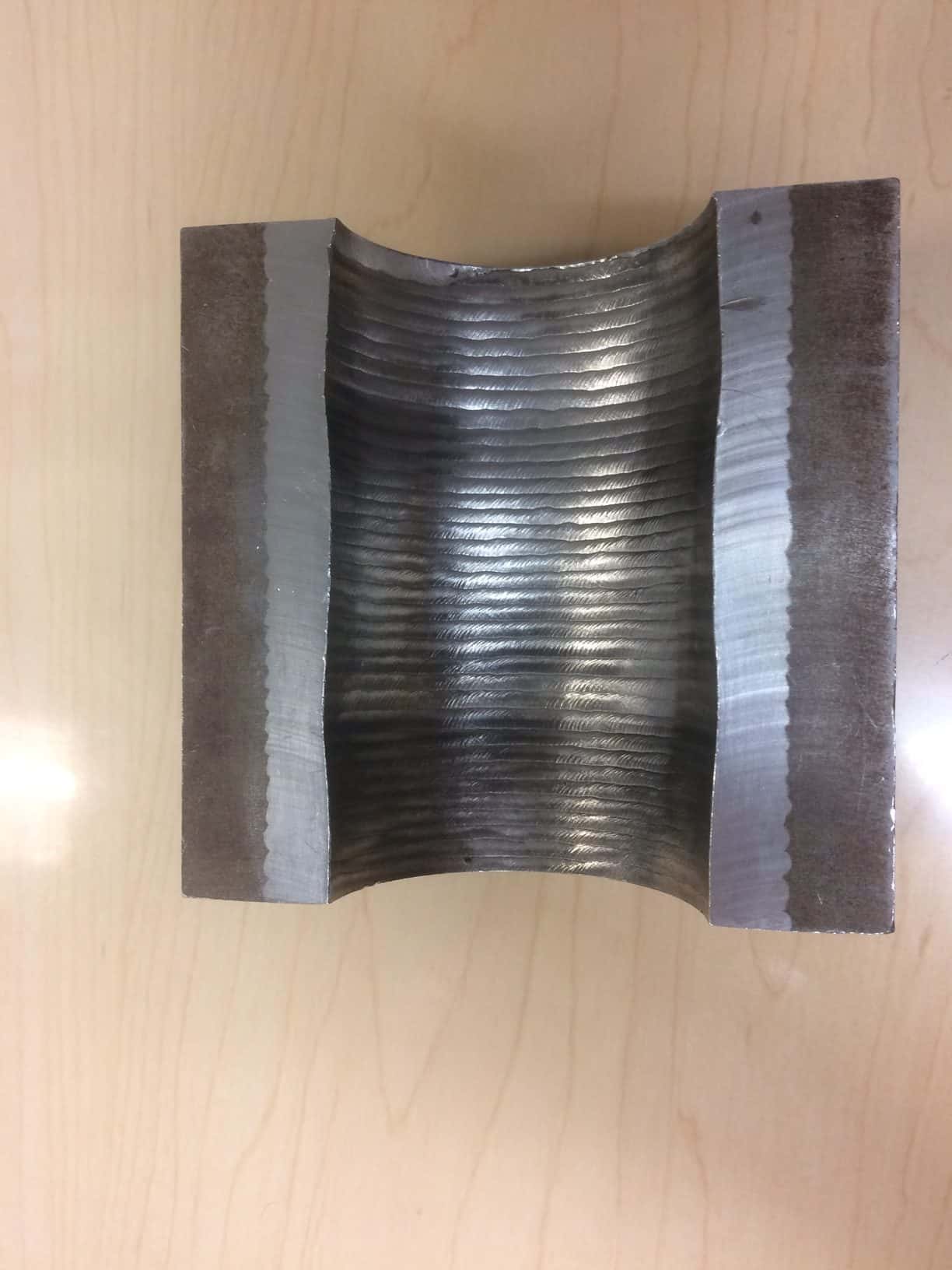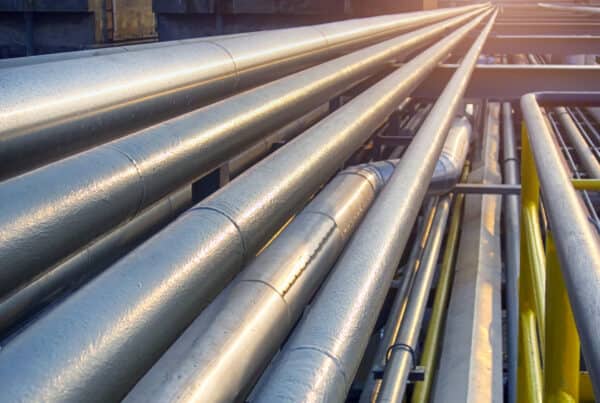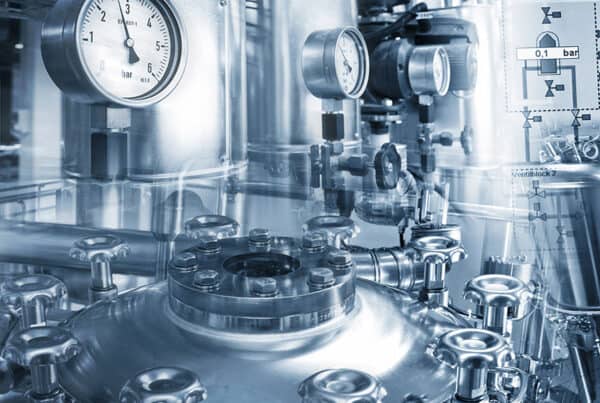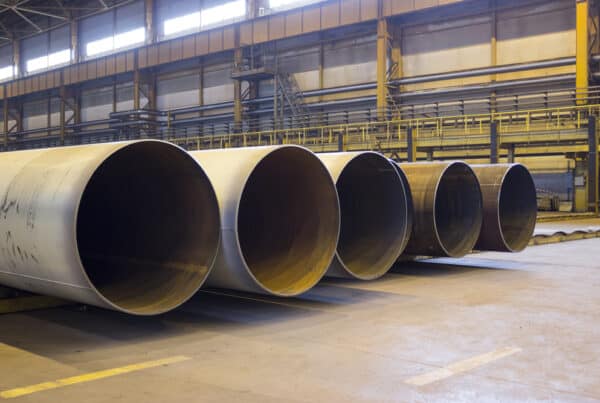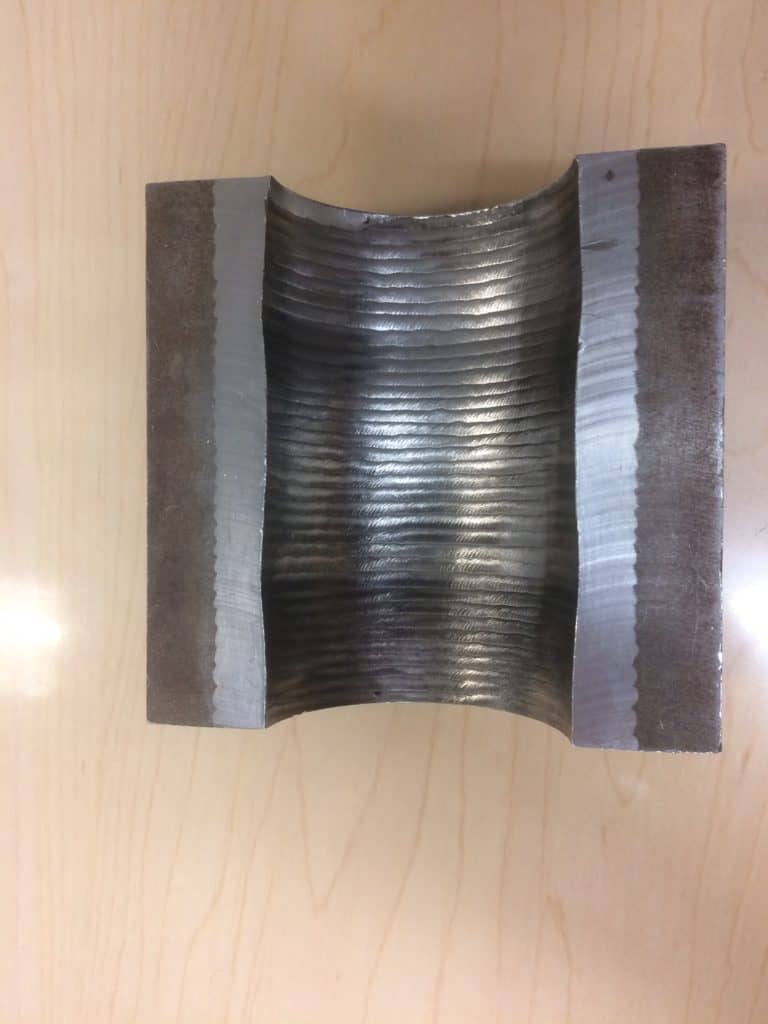
The repetitive task of surface hardening is usually thought of as a punishment by most welders, but this welding process fulfills an important role. It is most often used to build up the contact surfaces of heavy equipment after use has worn them down. Surface hardening is also used to create a surface with different properties than the underlying substrate, such as a hard surface over a more ductile substrate or a corrosion-resistant surface over a structurally stable underlayment. When this process is used on the interior surface of a pipe, it’s even more critical.
Weld overlay cladding can provide common low-carbon steel or mild steel piping with an internal contact surface that resists corrosion and extreme alkalinity or acidity. It can also create a smooth, nonporous surface for improved product flow. As a result, pipe cladding is critical for creating cost-effective process piping for any number of applications. It is also extremely challenging to do this sort of internal pipe cladding process using any type of manual welding technique. Efficient automated pipe cladding methods are the key to timely equipment manufacturing and project completion within vital strategic industries like power generation, petrochemical processing, biopharmaceutical processing, equipment manufacturing, water purification, and many other fields. Ultimately, the weld overlay process you choose will determine both project completion and future product manufacturing timetables.
Common Pipe Cladding Methods for Industries
At their most fundamental level, pipe cladding methods involve simply bonding together two different metals, which may be very dissimilar. There are several pipe cladding methods in widespread use. A few of the more common techniques are:
- Hot Rolling: Hot rolling bonds the base material with the cladding material by heating the base metal and passing it and the cladding alloy through a set of hot rollers. Usually, the base metal is in the form of a steel plate and clad pipes are then created by curling the metal.
- Coextrusion: Extruded pipes are created by pushing molten or near-molten metal through a circular mold. Coextrusion means that clad piping is created by extruding the exterior pipe and its liner at the same time.
- Explosion Bonding: The most exciting way to clad pipes or pressure vessels involves setting off high explosives. A steel pipe or vessel is lined with cladding and carefully calculated explosive charges are placed on the cladding surface. When the manufacturing crew sets off the charges, the heat and pressure of the explosion bond the pipe and cladding together.
- Powder Metallurgy: This method is similar to that used to put a moisture- and corrosion-resistant powder coating on furniture and car underbodies. It involves depositing a layer of powdered material on the interior surface of the pipe and melting the powder using heat, an electrical current, or lasers.
- Weld Overlay: Using essentially the same method as is used to perform surface hardening on heavy equipment, the weld overlay cladding method puts down overlapping weldments on the interior surface of a pipe. These might be machined later to polish the interior surface, but with some automated welding techniques this is not necessary.
Of all the types of pipe cladding methods, weld overlay processes are perhaps the most common for petroleum pipelines and other high-pressure industrial uses. This is due to the drawbacks found in other processes. Outside of some rare exceptions, the hot rolling method is only used to apply cladding to flat plates. When pipes are formed out of these plates by rolling them into tubes, the seam that runs the length of the pipe creates a weak point that makes these pipes unsuitable for most high-pressure uses. The coextrusion process, on the other hand, creates a seamless pipe, but is limited to creating pipes within a certain narrow range of sizes. Explosive bonding is used only for the largest and thickest of pipes and vessels, for obvious reasons. Finally, powder coating can be used on the interior of very small pipes, but the coating tends to be thin and will burn off when the pipe is welded.
When choosing a pipe cladding method, most project managers will opt for a weld overlay process due to the sheer versatility it offers.
Weld overlay pipe cladding has the advantage of versatility over other types of pipe cladding methods. With the right weld head, this method can clad the interiors of tubing as small as 1.7 centimeter (cm) interior diameter and pipes as large as 80 cm in interior diameter. The cladding material can be as varied as the wire feeds that these weld heads can use, and the thickness of the cladding can be adjusted by the operator. This variation in cladding thickness isn’t possible with powder metallurgy, in which the cladding layer has to be very thin, or explosive bonding, which requires both cladding and substrate that are thick enough to survive the detonation of explosives. When choosing a pipe cladding method, most project managers will opt for a weld overlay process due to the sheer versatility it offers.
Choosing the Best Weld Overlay Process
Traditionally, a weld overlay process involved mounting the pipe being clad and spinning it around a welding torch head at a consistent speed. This was a tricky process, as pipe segments tend to be long and may be quite heavy. Engineering a system to move a six-meter section of pipe around a weld head, for instance, is a significant engineering challenge.
The most precise and controlled cladding process used with automated weld heads is orbital gas tungsten arc welding (GTAW).
The innovation that made welding overlay pipe cladding a preferred process was mounting the torch head and allowing it to revolve around the inside diameter of the pipe. This is accomplished in very long pipes by means of a boom outfitted with power cabling called a welding lance. This method is much easier to perform onsite since the entire pipe does not have to be set up to rotate and modern orbital welding equipment is portable and simple to set up.
The most precise and controlled cladding process used with these automated weld heads is orbital gas tungsten arc welding (GTAW), specifically, hot-wire GTAW. The tungsten electrode used in this welding process withstands very high heat and directs that heat into a tightly focused area, minimizing the distortion that can result from heat buildup. The GTAW process also produces overlays with very low dilution rates since critical parameters are controlled and maintained thru the automated system.The use of a wire feed offers the choice of a variety of corrosive-resistant welding materials as the cladding material. As a pipe cladding method, hot-wire GTAW offers both precision and versatility for industries such as nuclear, petrochemical, and pipe and vessel manufacturing.
Arc Machines, Inc. is the leader in GTAW orbital welding, providing pipe cladding equipment for stainless steel, Monel, Inconel, and other metals across all diameters of pipe and tubing. For inquiries regarding products, contact sales@arcmachines.com. For service inquiries, contact service@arcmachines.com. Arc Machines welcomes the opportunity to discuss your specific needs. Contact us to arrange a meeting.

